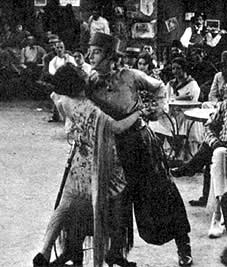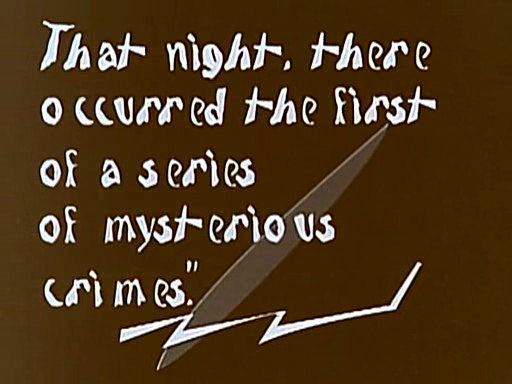|
Maria Pavlowna
''Maria Pavlowna'' is a 1919 German silent drama film directed by Emil Justitz and starring Maria Fein, Ernst Rückert and Ernst Stahl-Nachbaur.Caneppele p.234 It premiered at the Marmorhaus in Berlin. Cast * Maria Fein as Maria Pavlowna * Ernst Rückert as Boris Lensky * Ernst Stahl-Nachbaur Ernst Stahl-Nachbaur (6 March 1886 – 13 May 1960) was a German film actor. Early life Stahl-Nachbaur was born in Munich, Germany and died at age 74 in Berlin. Selected filmography * ''Das Geschlecht der Schelme. 1. Teil'' (1917) * ''Das v ... as Polizist Maximowitsch * Kurt Walter as Sergej * Ray Walton as Alexandra References Bibliography * Paolo Caneppele. ''Entscheidungen der Tiroler Filmzensur 1919-1920-1921: mit einem Index der in Tirol verbotenen Filme 1916-1922''. Film Archiv Austria, 2002. External links * 1919 films Films of the Weimar Republic Films directed by Emil Justitz German silent feature films {{Germany-silent-film-stub ... [...More Info...] [...Related Items...] OR: [Wikipedia] [Google] [Baidu] |
Emil Justitz
Emil Justitz (1878–1932) was an Austrian film director and producer of the silent era.Grange p.98 Selected filmography * ''Martyr of His Heart'' (1918) * ''Maria Pavlowna'' (1919) * ''The Red Poster'' (1920) * '' The Hustler'' (1920) * ''Demon Circus'' (1923) * '' The Stolen Professor'' (1924) * ''Poor as a Church Mouse'' (dir. Richard Oswald Richard Oswald (5 November 1880 – 11 September 1963) was an Austrian film director, producer, screenwriter, and father of German-American film director Gerd Oswald. Early career Richard Oswald, born in Vienna as Richard W. Ornstein, began h ..., 1931) References Bibliography * Grange, William. ''Cultural Chronicle of the Weimar Republic''. Scarecrow Press, 2008. External links * 1878 births 1932 deaths Austrian film directors Film people from Vienna {{Austria-film-director-stub ... [...More Info...] [...Related Items...] OR: [Wikipedia] [Google] [Baidu] |
Drama Film
In film and television, drama is a category or genre of narrative fiction (or semi-fiction) intended to be more serious than humorous in tone. Drama of this kind is usually qualified with additional terms that specify its particular super-genre, macro-genre, or micro-genre, such as soap opera, police crime drama, political drama, legal drama, historical drama, domestic drama, teen drama, and comedy-drama (dramedy). These terms tend to indicate a particular setting or subject-matter, or else they qualify the otherwise serious tone of a drama with elements that encourage a broader range of moods. To these ends, a primary element in a drama is the occurrence of conflict—emotional, social, or otherwise—and its resolution in the course of the storyline. All forms of cinema or television that involve fictional stories are forms of drama in the broader sense if their storytelling is achieved by means of actors who represent (mimesis) characters. In this broader s ... [...More Info...] [...Related Items...] OR: [Wikipedia] [Google] [Baidu] |
Films Of The Weimar Republic
A film also called a movie, motion picture, moving picture, picture, photoplay or (slang) flick is a work of visual art that simulates experiences and otherwise communicates ideas, stories, perceptions, feelings, beauty, or atmosphere through the use of moving images. These images are generally accompanied by sound and, more rarely, other sensory stimulations. The word "cinema", short for cinematography, is often used to refer to filmmaking and the film industry, and to the art form that is the result of it. Recording and transmission of film The moving images of a film are created by photographing actual scenes with a motion-picture camera, by photographing drawings or miniature models using traditional animation techniques, by means of CGI and computer animation, or by a combination of some or all of these techniques, and other visual effects. Before the introduction of digital production, series of still images were recorded on a strip of chemically sensit ... [...More Info...] [...Related Items...] OR: [Wikipedia] [Google] [Baidu] |
1919 Films
Events January * January 1 ** The Czechoslovak Legions occupy much of the self-proclaimed "free city" of Pressburg (now Bratislava), enforcing its incorporation into the new republic of Czechoslovakia. ** HMY ''Iolaire'' sinks off the coast of the Hebrides; 201 people, mostly servicemen returning home to Lewis and Harris, are killed. * January 2– 22 – Russian Civil War: The Red Army's Caspian-Caucasian Front begins the Northern Caucasus Operation against the White Army, but fails to make progress. * January 3 – The Faisal–Weizmann Agreement is signed by Emir Faisal (representing the Arab Kingdom of Hejaz) and Zionist leader Chaim Weizmann, for Arab–Jewish cooperation in the development of a Jewish homeland in Palestine, and an Arab nation in a large part of the Middle East. * January 5 – In Germany: ** Spartacist uprising in Berlin: The Marxist Spartacus League, with the newly formed Communist Party of Germany and the Independent Social Demo ... [...More Info...] [...Related Items...] OR: [Wikipedia] [Google] [Baidu] |
Ray Walton (actor)
Ray Walton (born 10 August 1936) is a former Australian rules footballer who played with St Kilda in the Victorian Football League The Victorian Football League (VFL) is an Australian rules football league in Australia serving as one of the second-tier regional semi-professional competitions which sit underneath the fully professional Australian Football League (AFL). It ... (VFL). Notes External links * * {{DEFAULTSORT:Walton, Ray Living people 1936 births Australian rules footballers from Victoria (state) St Kilda Football Club players Maffra Football Club players ... [...More Info...] [...Related Items...] OR: [Wikipedia] [Google] [Baidu] |
Kurt Walter (actor)
The Knight's Cross of the Iron Cross (german: Ritterkreuz des Eisernen Kreuzes) and its variants were the highest awards in the military and paramilitary forces of Nazi Germany during World War II. The decoration was awarded for a wide range of reasons and across all ranks, from a senior commander for skilled leadership of his troops in battle to a low-ranking soldier for a single act of extreme gallantry. A total of 7,321 awards were made between its first presentation on 30 September 1939 and its last bestowal on 17 June 1945. This number is based on the acceptance by the Association of Knight's Cross Recipients (AKCR). Presentations were made to members of the three military branches of the Wehrmacht—the Heer (Army), Kriegsmarine (Navy) and Luftwaffe (Air Force)—as well as the Waffen-SS, the Reich Labour Service, and the Volkssturm (German national militia). There were also 43 foreign recipients of the award. These recipients are listed in the 1986 edition of Walther-Pee ... [...More Info...] [...Related Items...] OR: [Wikipedia] [Google] [Baidu] |
Berlin
Berlin is Capital of Germany, the capital and largest city of Germany, both by area and List of cities in Germany by population, by population. Its more than 3.85 million inhabitants make it the European Union's List of cities in the European Union by population within city limits, most populous city, as measured by population within city limits having gained this status after the United Kingdom's, and thus London's, Brexit, departure from the European Union. Simultaneously, the city is one of the states of Germany, and is the List of German states by area, third smallest state in the country in terms of area. Berlin is surrounded by the state of Brandenburg, and Brandenburg's capital Potsdam is nearby. The urban area of Berlin has a population of over 4.5 million and is therefore the most populous urban area in Germany. The Berlin/Brandenburg Metropolitan Region, Berlin-Brandenburg capital region has around 6.2 million inhabitants and is Germany's second-largest metropolitan reg ... [...More Info...] [...Related Items...] OR: [Wikipedia] [Google] [Baidu] |
Marmorhaus
The Marmorhaus (English: Marble House) is a former cinema located on the Kurfürstendamm in Berlin. Opened in 1913, it takes its name from a large marble façade. Designed by the architect Hugo Pál, the walls of the foyer and auditorium were decorated by the expressionist artist Cesar Klein. During the silent era it frequently functioned as a venue for premieres of new films. These included ''The Cabinet of Dr. Caligari'', '' Johannes Goth'', '' The Woman in Heaven'', '' The Head of Janus'', ''Genuine Genuine may refer to: Companies *Genuine Parts Company, a Fortune 1000 company that was founded in 1928 *Genuine Scooters, a Chicago-based scooter manufacturer *Genuine Games, a video game company founded in early 2002 Music * ''Genuine'' (S ...'', '' Four Around a Woman'', '' Wandering Souls'', and '' The Haunted Castle''.Kreimeier p.74 Owned by the giant UFA company for many years, it was later developed into a multiplex. In 2001 the cinema was closed and the prop ... [...More Info...] [...Related Items...] OR: [Wikipedia] [Google] [Baidu] |
Silent Film
A silent film is a film with no synchronized Sound recording and reproduction, recorded sound (or more generally, no audible dialogue). Though silent films convey narrative and emotion visually, various plot elements (such as a setting or era) or key lines of dialogue may, when necessary, be conveyed by the use of intertitle, title cards. The term "silent film" is something of a misnomer, as these films were almost always accompanied by live sounds. During the silent era that existed from the mid-1890s to the late 1920s, a piano, pianist, theatre organ, theater organist—or even, in large cities, a small orchestra—would often play music to accompany the films. Pianists and organists would play either from sheet music, or musical improvisation, improvisation. Sometimes a person would even narrate the inter-title cards for the audience. Though at the time the technology to synchronize sound with the film did not exist, music was seen as an essential part of the viewing experie ... [...More Info...] [...Related Items...] OR: [Wikipedia] [Google] [Baidu] |
Intertitles
In films, an intertitle, also known as a title card, is a piece of filmed, printed text edited into the midst of (i.e., ''inter-'') the photographed action at various points. Intertitles used to convey character dialogue are referred to as "dialogue intertitles", and those used to provide related descriptive/narrative material are referred to as "expository intertitles". In modern usage, the terms refer to similar text and logo material inserted at or near the start or end of films and television shows. Silent film era In this era intertitles were mostly called "subtitles" and often had Art Deco motifs. They were a mainstay of silent films once the films became of sufficient length and detail to necessitate dialogue or narration to make sense of the enacted or documented events. ''The British Film Catalogue'' credits the 1898 film ''Our New General Servant'' by Robert W. Paul as the first British film to use intertitles. Film scholar Kamilla Elliott identifies another early use of ... [...More Info...] [...Related Items...] OR: [Wikipedia] [Google] [Baidu] |
Helmar Lerski
Helmar Lerski (18 February 1871, in Strasbourg – 19 September 1956, in Zürich) was a photographer who laid some of the important foundations of modern photography. His works are on display in the USA, Germany, Israel and Switzerland. He focused mainly on portraits and the technique of photography with mirrors. His real name was Israel Schmuklerski. In 1876, the family moved to Zürich, Switzerland, where the family was naturalized. In 1888, Lerski emigrated to the United States, where he worked as an actor. Around 1910, he began to photograph. In 1915, he returned to Europe and worked as a cameraman and expert for special effects for many films, including Fritz Lang's ''Metropolis''. At the end of the 1920s, he made a name as an avant-garde portrait photographer. In 1932, he emigrated with his second wife to Mandate Palestine, where he continued to work as a photographer, cameraman, and film director. On 22 March 1948, they left what was by then Israel and settled again in Z� ... [...More Info...] [...Related Items...] OR: [Wikipedia] [Google] [Baidu] |








